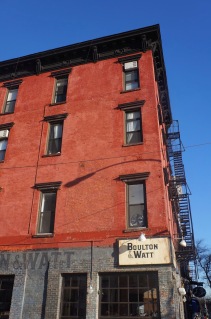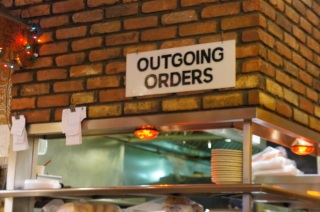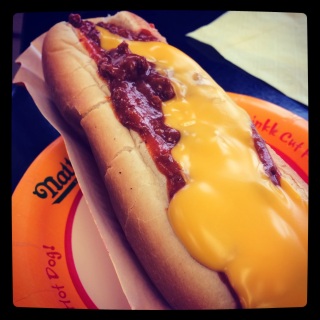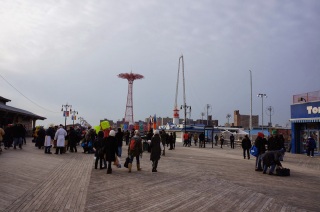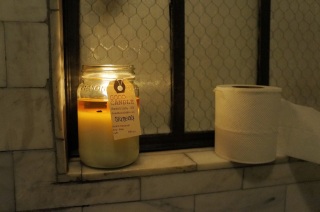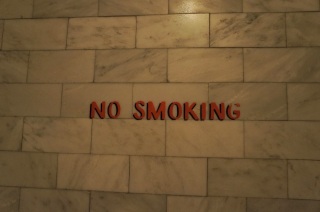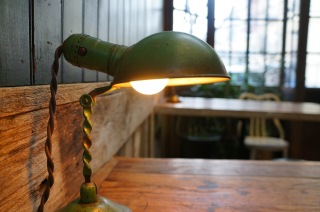Month: January 2014
district X
aka. Mutant town aka Alphabet City
Mutant Town is a fictional location in Marvel Comics, a neighbourhood based on Alphabet City in a post-apocryphal New York primarily inhabited by mutants. There is some sort of link to X-men in there. I’m no comic expert. Clearly.
But I saw no sign of mutants in the real Alphabet City. Although it was eerily quiet the day we walked around there. Alphabet City is an area in the East Village. It gets its name for Avenues A, B, C and D, the only avenues in Manhattan to have single letter names.
Alphabet City has had a few names, and Mutant City has not been one of them. Klein Deutschland, Loisaida, Nu Yorica all reflect the immigrant populations who have lived and worked there and tried to make their way in their desire to live the American Dream.
Until the early 19th century, Alphabet City was marshland. The riverbed was drained by developers, reclaimed and built on. The first wave of immigrants to pass through were German. By the 1880s, Eastern Europeans replaced Germans as the dominant group, jostling for space with Eastern European Jewish arrivals, Irish and Italian immigrants. And when I say jostling, that was absolutely the case. By the turn of the 20th century, Alphabet City was among the most densely populated areas of New York City. The inhabitants lived in tenements, most of which did not have running water, and many of them worked in the garment factories located in the area. With the advent of the subway system, the population decreased significantly as workers were able to live in other (cleaner and safer) areas and take the train to work.
As the calendars turned over and the turn of the twentieth century kicked in, a new wave of immigrants poured into the area. Thousands of Puerto Ricans began to settle around the A-D avenues and the Spanglish word for Lower East Side, Loisaida, was being bandied around. In the sixties, seventies and eighties, Alphabet City was the scene of a strong movement to develop the cultural identity of the Puerto Rican people. This Nuyorican movement was largely led by intellectuals, poets and artists.
In the eighties, Alphabet City epitomised all that is bohemian. It was home to many of the first graffiti writers and b-boys, rappers and DJs. It was also pretty well known for drugs and crime. Law and Order: SVU would still have you believe it’s dodgy.
The latest incarnation of Alphabet City is a gentrified, more hipster one. Shabby-chic and still sporting the colourful murals that belie its bohemian past, Alphabet City is now all tidy streets, nice looking restaurants and bars and quiet neighbourhood parks.
Walking around the streets, azure sky above, snow crunching underfoot was the perfect way to digest a pastrami sandwich.
I’ll have what she’s having
When I think of New York, I think pastrami sandwich. Well, of course I think a lot of things, and moreso now, but pastrami sandwich is definitely one of the images I had in my head when I imagined New York.
Now Katz’s Deli is the place to go if you want to really know about pastrami in New York. Katz’s Deli on the Lower East Side has been slapping a lot of pastrami between slices of bread and sticking hot dogs in buns since 1888 and has achieved iconic status for their very fine efforts. In fact, Katz’s is so popular that each week they serve 10,000 pounds of pastrami, 5,000 pounds of corned beef, 2,000 pounds of salami and 12, 000 hot dogs. That’s a lot of meat.
And when you’re that popular, why change anything. So they don’t. It’s old school diner. And the food is simple. And good.
The pastrami sandwich is exactly that. Pastrami…but better than I have ever tasted: smokey, moist, thick…between two slices of sour dough or rye with mustard and a plate of sour pickle on the side. Perfect.
Popularity also allows for quirky rules around paying. When you enter Katz’s, a door attendant gives you a printed, numbered ticket. As you order food from the various stations – sandwiches, drinks, hotdogs etc. – your server writes a running total of the bill which you pay at the cashier’s counter on the way out. If the bill is all on one ticket, but each person in your party has been given a ticket, the empty tickets must be handed in also. There is a $50 lost ticket fee to prevent customers from conveniently losing tickets which may have had items on them and failing to pay.
The “send a salami to your boy in the army” catch phrase which came about during World War II when Katz’s encouraged families to send a taste of home to the soldiers overseas is still in place today. Katz’s has an arrangement with the US postal system to send gift packages to troops stationed in Afghanistan and Iraq.
Nice.
the polar vortex
I will never complain about being cold again. I come from Christchurch. That’s in the South Island of New Zealand. It’s the gateway to Antarctica. We get a lot of frosts in Winter. I thought it was pretty cold some mornings in Christchurch. How wrong could I be?
I think a fairly good indicator that it’s cold is if the Niagara Falls freeze. Which they did. And the Chicago Zoo put their polar bears indoors, as did the National Aviary with their penguins in Pittsburgh. That’s pretty cold.
Polar Vortex is an evocative term. It sounds a bit like something from Star Wars. You can say it aloud with Darth Vader’s voice if you like. Go on.
Anyway, Polar Vortex is the name for the jet stream of Arctic air responsible for plunging much of the United States—by one estimate, 187 million were affected—into a kind of temporary deep freeze over the time that I was there.
Apparently, temperatures have been the coldest in almost 20 years. And everyone was talking about it in that collective way people do when brought together over polar vortices, heat waves and AFL scandal. In elevators, restaurants, stores, the word on the street was: this is COLD.
The snow was pretty. Particularly in Central Park. And the good thing about walking around in a polar vortex and feeling as though your feet and hands and face might actually drop off, is that it is absolutely legitimate, in fact vital, to make frequent stops to thaw out in diners, cafes, bars. And wine is very warming. And medicinal. It is. Really.
Fifth Avenue
Fifth Avenue is very flash and fancy pants.
It is a major thoroughfare in the centre of Manhattan and serves as the dividing line for housenumbering and west-east streets in Manhattan. It separates, for example, East 59th Street from West 59th Street. From this zero point for street addresses, numbers increase in both directions as one moves away from Fifth Avenue.
Fifth Avenue is often referred to as the most expensive street in the world. This, of course depends on the economy, but it certainly has some ritzy stores and the American Planning Association who are all about encouraging communities to flourish, put Fifth Avenue at the top of the list in 2012 for Great Places to Visit. It is THE street to visit in America. No pressure, Fifth Avenue.
So. I have walked down The Street. It is partly wasted on me. I am not a shopper. So, while I got a certain thrill from seeing such legendary stores as Bloomingdales and Saks Fifth Avenue, I didn’t really want to go inside and peruse their wares. I know. Sorry.
There is also a stretch of Fifth Avenue referred to as Museum Mile. From 82nd to 105th Streets on the Upper East Side, there is a dense cultural richness, should you have the time and inclination, waiting for you.
I did not go to Museums (except for the Tenement (Immigration) Museum which I loved) or Art Galleries while I was in New York. You may well shake your heads at me and chastise me for my lack of culture. But I just was not in a space where I wanted to stand in long ticket queues and then be trapped into having to invest the required amount of time it takes to appreciate art and history and culture. Don’t get me wrong, I do enjoy art and culture. But I had the impression that I would miss out on New York if I was indoors looking at things. The thing I loved the most…or, one of the things I loved most about New York, was the walking around and taking it all in, the stumbling on things, places, people.
This did also happen on Fifth Avenue. I absolutely appreciated being taken to the Rockefeller Centre at night and loved the way it was lit up and seeing the ice skating rink at its base.
And I also loved the Flatiron building which is all the way down by Union Square. In 1902 when it was built, the Flatiron building was one of the tallest skyscrapers in New York. It is still a functioning office building.
So, perhaps Fifth Avenue was wasted on me. And perhaps it was not. I loved it just for it being itself and not for what it gave me in terms of possessions and edification.
Nathan’s Famous
Nathan’s Famous is famous for its hotdogs. Nathan Handwerker and his wife, Ida, originally from Poland, started the company as a nickel hotdog stand which sold hotdogs from Ida’s special recipe. The hotdogs were instantly popular and the first restaurant opened in Coney Island in 1916.
You can’t think hotdogs without thinking hot dog eating competition. As the billboard below boasts, Joey “Jaws” Chestnut won this prestigious gastronomic challenge for the 7th year in a row in 2013 when he ate 69 hotdogs in ten minutes. If you would like to see this incredible, but disgusting feat, you can watch the video below. But this video is not for the faint hearted. I watched with some sense of morbid fascination as contestants, and notably Chestnut, stuff hotdogs into their mouths.
Nathan’s Famous Hotdog Eating Contest takes place every year on the 4th of July on Coney Island’s boardwalk.
There are a lot of questions about all of this.
Why? is a big one for me.
But competitive eating has been around for a while and has its roots in county fairs and pie-eating contests. Now it is described as a sport and competitors prepare for contest the way marathon runners would prepare for the psychological and physical challenges their sport presents. Competitive eaters prepare to increase their stomach capacities and their speed in consuming the food.
So, in 2013, Joey Chestnut ate 69 sausages in buns and Sonya ‘The Black Widow” Thomas won the women’s competition on 36 3/4 hotdogs.
Why do the women manage less hotdogs than the men? According to medical type people, women’s stomachs are larger than men’s. And our intestines are longer. I would have thought that would be an advantage. In many cases, women do manage to eat more than men in competitions, but it can depend on the type of food being eaten and the duration of time. Sonya Thomas says that speed of swallow is a limiting factor for her in the hotdog eating competition, but that her hand to mouth speed is pretty phenomenal.
I couldn’t do it. I had a chilli cheese hotdog at Coney Island. Just the one. And it was a challenge in itself to eat it elegantly.
I did not eat it elegantly.
rabbits, the moon and stuff
Coney Island is a large neighbourhood with a beach. It used to be an island, hence the inclusion of island in its name. But it is now referred to as a peninsula because it is connected to the mainland by landfill. Not the loveliest of images, but handy.
The Coney part of its name comes from the dutch word for rabbit, conyne, and refers to the many and diverse species of rabbits which populated the island before resort development eliminated their environment.
Pretty much everyone would associate the name, Coney Island, with amusement parks and a slightly surreal escape from everyday life. The Native American name for the area is Narrioch, which means land without shadows because, due to its geographical position, it remains in sunlight all day. This, its beach and its proximity to Manhattan and the other boroughs, made it an ideal destination for a daytrip or mini-break (which I’m not sure was a term in those days, nor would the vacationing Manhattanites have taken #selfies by the beach, but let’s continue…) from the 1830s on.
The first signs of garish paint and frivolity came in 1876 with a carousel. Then when the wooden horses, the drum and flute music and the 5c ticket price no longer provided the thrill they once had, amusement parks stepped up. Luna Park opened in 1903, boasting a wildly popular ride, A Trip to the Moon, where excited New Yorkers could ride on a spaceship called Luna, which was not a rocket but had flapping wings. Although the spaceship and park weren’t actually named after the moon, but after one of the creator’s sisters, Luna.
Coney Island has had many peaks and troughs in its existence. After World War II, there was a decline in the number of visitors to the beach resort. Gang problems in the 50s, the advent of automobiles which provided access to the more appealing Long Island beaches, and a downturn in economy were contributing factors in the demise of the area in the mid to late years of last century.
But nostalgia and entrepreneurialship have seen a revival of the amusement parks and the area, particularly in the summer. In April, 2011, the first new rollercoaster for eighty years was opened.
For all that, it is still a pretty strange place. As a contributor on urban dictionary said:
I’d paint the Brooklyn Bridge for you
with a broom.
A country singer sang these words….or, at least, words to that effect.
The Brooklyn Bridge is the oldest suspension bridge in the United States. Completed in 1883, it connects the boroughs of Manhattan and Brooklyn. From its opening, it has been a New York City Icon.
The paint scheme, should you want to prove how much you’re into someone, is Brooklyn Bridge Tan and Silver. The paint is redone every twelve years and it takes four years to complete the bridge.
The bridge originally carried horse-drawn and rail traffic with a separate elevated walkway for pedestrians and cyclists. From 1950, cars were allowed on. In 1971, an auspicious year for many reasons, the first cycle lane was created by painting a line down the middle of the walkway to separate cyclists from pedestrians.
There were initial fears that the bridge would not be strong enough, despite the fact that the bridge’s creator had made it six times as strong as it actually needed to be. Not long after the bridge’s opening, P.T. Barnum of circus fame, led 21 elephants across the bridge to demonstrate its sturdiness.
High Line
When asked what my favourite city in the world is, I say Paris. I was overwhelmed by Paris when I first visited. But let’s be honest, I was overwhelmed by a lot of things in my youth. And I have been lucky enough to have the opportunity to go back several times and allow my appreciation and love for Paris to grow. It is a beautiful city.
But everyone says that New York is their favourite city. New York, Paris and Barcelona seem to fight it out in the ring of heavyweight citi-ness. But perhaps they shouldn’t be fighting it out, as each city has it’s own personality and winsome ways.
When I told people I was going to New York, there was a myriad of advice, such as where to get the most amazing vegan cupcakes, to absolutely shop til I dropped because it’s so much cheaper and the best museums and art galleries to visit. Some advice resonated more than others.
The High Line was one of the best recommendations.
The High Line is a 1.6km linear park built on a section of the former New York Central Railroad. It is in lower west Manhattan, and has been redesigned and planted as an aerial greenway. The first section opened in 2009 and the second in 2011.
Inspired by the 4.8km promenade plantée in Paris, this elevated strip is a calm and lovely way to get a different perspective on New York. And perhaps another reminder, if the Statue of Liberty isn’t enough for you, that cities can work together.
Cafe Colette
Cafe Colette is a 1937 British thriller film directed by Paul L. Stein and starring Paul Cavanagh, Greta Nissen and Sally Gray. I have no idea who any of these people are. It was also released under the alternative and particularly alluring title of, Danger in Paris. The intriguing story of a diplomat who falls in love with an exiled Russian princess. Apparently. There’s not much more information on this clearly ground-breaking and impressive film, and clearly the name has a certain ring to it. Although Danger in Paris would be an excellent name for a restaurant…
Cafe Colette is also a restaurant in Williamsburg, Brooklyn. I had seen a photo a friend had posted on Instagram and for whatever reason, I decided I had to go there for lunch on the last day of 2013.
I loved the Cafe Colette neighbourhood. Slightly concerning, although perhaps not surprising, Williamsburg is described as an influential hub for indie rock, hipster culture, and the local art community. I don’t really think I have a penchant for anything hipster, and yet, there I was, loving the smell of blackened fish and the suburban houses with steps going up to the front doors.
Henry Miller, the novelist, lived in Williamsburg. As did Winona Ryder, Man Ray, Barbara Streisand and Peaches Geldof.
See now, I knew it’d be a swell destination for a New Year’s Eve lunch.
Now, the cafe itself…think French country bistro meets diner, they fall in love and live happily ever after in a rustic atmosphere, producing an eclectic menu and quirky cocktails.
Colette Cocktail: gin, herbes de provence, sparkling rosé
Saint 75: vodka, elderflower liqueur, lemon, prosecco






